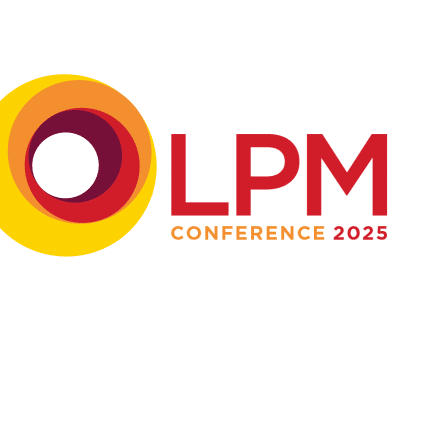
Unlocking the lawyer
LPM’s editor, Aftab Bose, speaks to Simon Farthing, commercial and marketing director at LexisNexis Enterprise Solutions, about change, innovation, and putting people at the heart of transformation.
Among the complex blend of factors that has contributed to an exodus of talent from the legal sector in recent times is a growing workload – particularly a rising pile of administrative tasks – for lawyers, as they look to satisfy ever-intensifying client demands. SME law firms looking to balance a good employee experience with a better client journey have tended to throw technology at the problem, though not always with the best results.
“We’ve ended up in a world of point solutions in SME legal. When firms need efficiencies such as legal project management, automated time recording, better budgeting and reporting, or smoother onboarding – they find individual tech solutions for each without necessarily tying them up into a coherent digital infrastructure,” says Simon Farthing, commercial and marketing director at LexisNexis Enterprise Solutions.
“The end goal tends to be profitability, efficiency or making life easier for clients, and lawyers don’t necessarily feel like they’re being helped by new technology. If anything, their life is becoming more complicated – they have several applications to log into and manage across many devices and a growing number of security protocols associated with each. This is against the backdrop of growing regulatory pressure and eroding respect from clients – who expect lawyers to deliver more for less.”
Far from feeling supported or empowered, lawyers feel stressed and alienated to various degrees, which, according to Farthing, is not only causing people to exit the sector but is also having a significant impact on the mental health of those who remain. What they need is to feel in control, rather than being controlled by technology and clients.
“Lawyers should have a clear idea of what is expected of them and should be provided with everything they need at their fingertips when they need it – instead of having to scroll through menus and sub-menus to find the right tools. They’re incredibly good at what they do, but they seem to have lost control of how they do it. We need to put them back in the driver’s seat,’” he says.
Breaking down walls
A lawyer by background, Farthing spent the first decade and more of his career doing a mixture of litigation and private client work. He recalls being tech-oriented and determined to improve and innovate processes right from the start, which is what led him to manage improvement projects within his business and eventually take up a technology leadership role at a law firm. His responsibility was to mediate and facilitate conversations between tech developers and the firm’s people – benefitting from the balance of having been in both positions.
“Communication between clients, lawyers and the internal services team is crucial to ensure that any innovation is beneficial for everyone,” he says, outlining the principles that still guide his work at LexisNexis Enterprise Solutions – where he takes the time to listen to people’s challenges rather than being presumptuous or prescriptive in his approach. According to him, technology should bring holistic value for firms.
“It’s true that demonstrating a better, more engaged service for clients at competitive price points helps firms to grow, and we have to help them achieve that. But this can’t happen in isolation – if you only focus on improving the client-facing side of your operations but you have lawyers that are unhappy, that will have an impact on service in the long run. There can’t be a wall between the two ends of the business.”
“The role of technology should be to develop an end-to-end journey that is a good experience for both parties. Eliminating unnecessary communication is a good example. Clients will often complain that they don’t know what’s happening at any given point in their case while lawyers will argue that keeping the client updated requires significant time and energy – particularly when, as in many cases, clients are stressed or emotionally stirred.”
“What if we used a system to remove the wall between them? Everyone would have access to information such as court dates, detailed status updates on each file and work-in-progress statements. This would minimise the need for unnecessary communication – clients would know what their lawyer is working on and receive a notification when it’s done so they don’t have to disturb the lawyer by phoning up.”
There are also advantages to be gleaned from a cost and budgeting perspective. “In complex cases, teams of eight or nine people could be stepping in at different times to deliver bits and pieces according to their allocated tasks, but this can pose serious project management and tracking challenges. If you controlled this process through a system, you could track if a lawyer or a paralegal was approaching the budgeted time for a particular piece of work and determine whether to reallocate that work to a junior member or have a conversation with clients about potential further costs,” says Farthing.
Foggy skies ahead
As such, data is the anchor of sorts that can connect all the point solutions currently being employed by law firms. Most use time recording tools, workflow automations and other core business systems – a layer of analytics over the top can give firms a holistic view of their position at any given point and enable better decision-making. “That’s the way to make sure technology fits into and improves lawyers’ processes, instead of the other way around. People don’t need to know what products they’re using for what – they need everything to be in a single view and joined up so that their processes are seamless,” says Farthing.
Historical data has value too. Years of using case management or practice management systems have endowed firms with rich repositories of reserve information such as claim types, accident types, defendants, parties and experts, among others. Farthing equates this to a “mountain of gold,” which firms can leverage for better decision-making if they invest in the right mining equipment such as artificial intelligence, analytics and visualisation tools that are in abundant supply in the market.
The challenge is to convince firms and leadership of the return on these investments, particularly at a time when cost-efficiencies are of the essence. Farthing employs another analogy to explain why challenging economic circumstances present all the more reason to invest in business intelligence. “It’s like flying a plane through fog and turbulence – even the best of pilots aren’t expected to make decisions based only on their gut feel, they need information on speed, altitude, direction, air traffic and potential hazards. Law firms are used to making decisions based on gut feel and experience, which is very valuable, but they could achieve their goals faster if they turned on autopilot and looked at some guides around them. Trusting data is the key,” he says.
And while the legal sector tends to innovate at a slower pace compared to other sectors – something that Farthing attributes to its identity as a traditional profession with strict standards – he posits that economic pressure has always pushed law firms to step up and change. As profitability becomes critical, firms will start to examine exactly where they can build in more efficiencies. The important thing is that lawyers’ needs are positioned at the core of any transformation efforts.
For Farthing and his team at LexisNexis Enterprise Solutions, the task ahead is to support these transformation journeys. “The most brilliant solutions emerge when we bring people together and facilitate a conversation – most times firms have all the answers on how they can improve and innovate, our job is simply to help piece it all together.”




